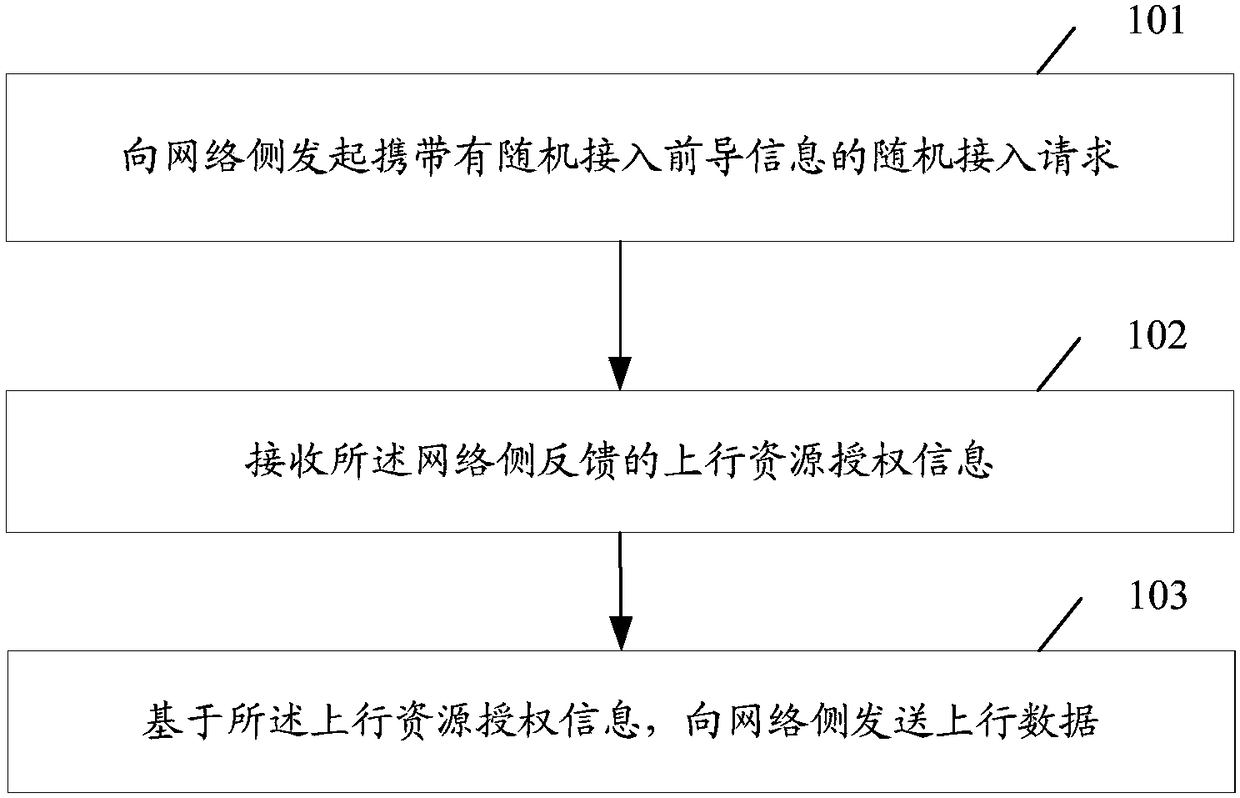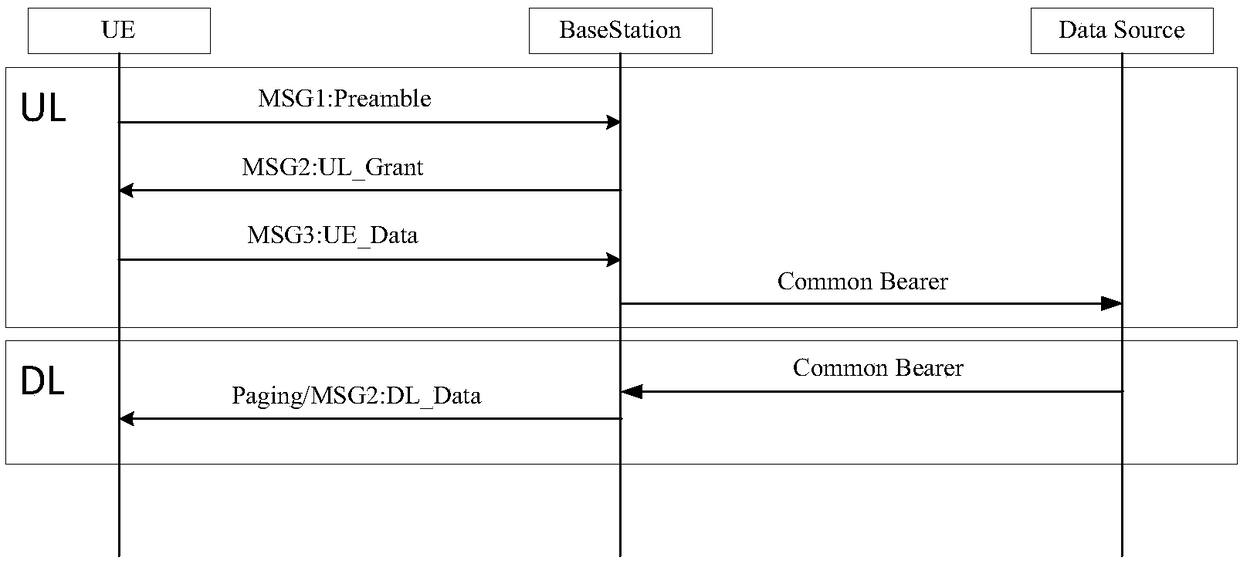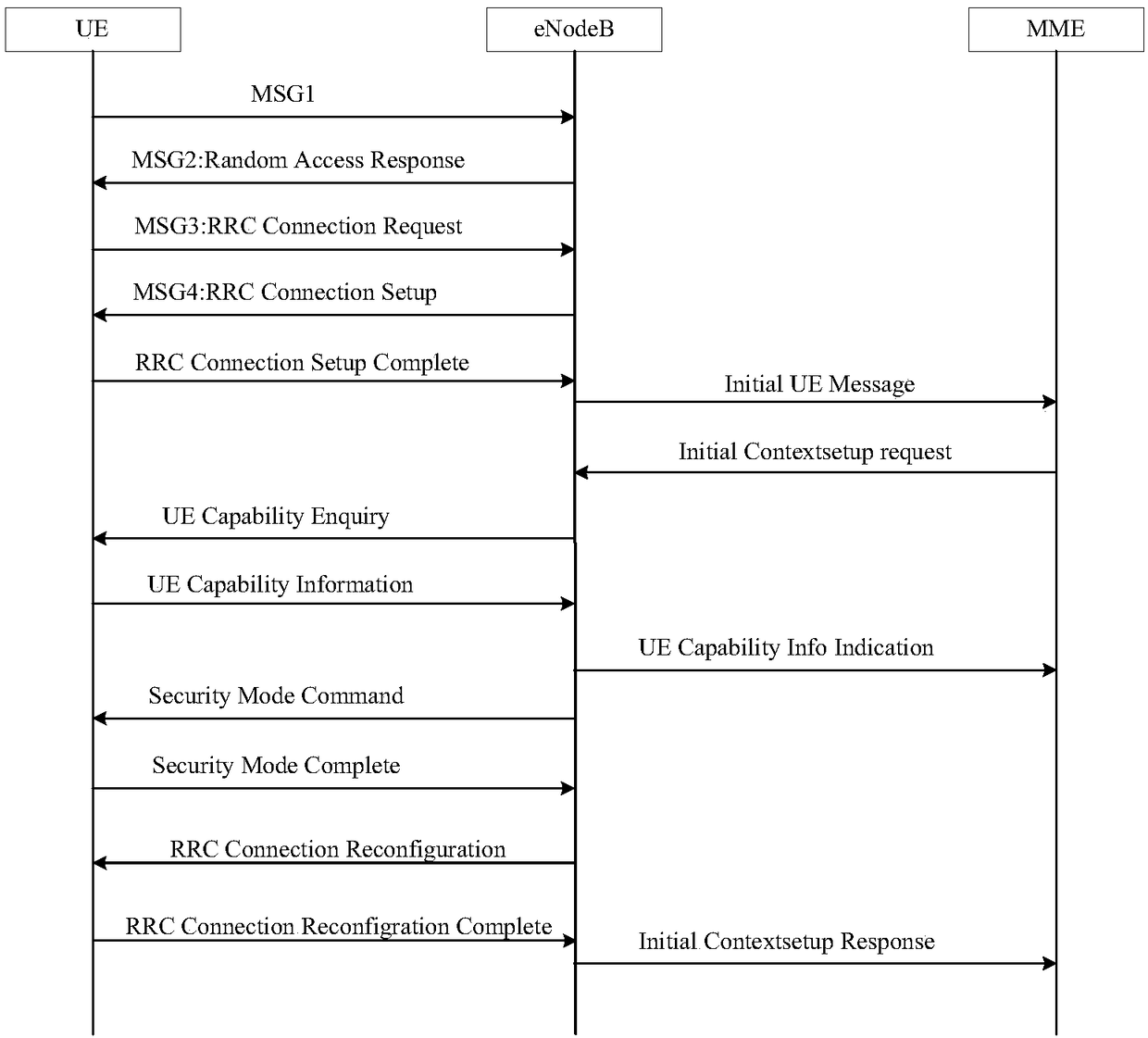Access processing method, user equipment, and network device
A technology for user equipment and network equipment, applied in the communication field, can solve the problems of high signaling overhead and delay, and achieve the effects of simplifying processing, improving efficiency, and reducing signaling overhead.
- Summary
- Abstract
- Description
- Claims
- Application Information
AI Technical Summary
Problems solved by technology
Method used
Image
Examples
Embodiment 1
[0031] An embodiment of the present invention provides an access processing method, such as figure 1 As shown, applied to user equipment, including:
[0032] Step 101: Initiate a random access request carrying random access preamble information to the network side;
[0033] Step 102: Receive the uplink resource authorization information fed back by the network side; wherein, the uplink resource authorization information includes at least time-frequency resources that can be used by the user equipment;
[0034] Step 103: Send uplink data to the network side based on the uplink resource authorization information.
[0035] In the 5G network, the burst service type is proposed. The data packets of this type of service are very small and the real-time requirements are very high. If it comes out according to the normal process, it will cause problems of time extension and high signaling overhead. If the traditional random access process is optimized according to the characteristic...
Embodiment 2
[0058] An embodiment of the present invention provides an access processing method, such as Figure 4 As shown, applications to network devices include:
[0059] Step 401: Receive a random access request carrying random access preamble information sent by a user equipment;
[0060] Step 402: Feed back uplink resource grant information to the user equipment; wherein, the uplink resource grant information includes at least time-frequency resources that the user equipment can use;
[0061] Step 403: Based on the uplink resource authorization information, receive uplink data sent by the user equipment.
[0062] In the 5G network, the burst service type is proposed. The data packets of this type of service are very small and the real-time requirements are very high. If it comes out according to the normal process, it will cause problems of time extension and high signaling overhead. If the traditional random access process is optimized according to the characteristics of such ter...
Embodiment 3
[0085] An embodiment of the present invention provides a user equipment, such as Figure 5 Shown include:
[0086] A request sending unit 51, configured to initiate a random access request carrying random access preamble information to the network side;
[0087] An information receiving unit 52, configured to receive the uplink resource grant information fed back by the network side; wherein, the uplink resource grant information includes at least time-frequency resources that can be used by the user equipment;
[0088] An information sending unit 53, configured to send uplink data to the network side based on the uplink resource authorization information.
[0089] In the 5G network, the burst service type is proposed. The data packets of this type of service are very small and the real-time requirements are very high. If it comes out according to the normal process, it will cause problems of time extension and high signaling overhead. If the traditional random access proces...
PUM
 Login to View More
Login to View More Abstract
Description
Claims
Application Information
 Login to View More
Login to View More - R&D
- Intellectual Property
- Life Sciences
- Materials
- Tech Scout
- Unparalleled Data Quality
- Higher Quality Content
- 60% Fewer Hallucinations
Browse by: Latest US Patents, China's latest patents, Technical Efficacy Thesaurus, Application Domain, Technology Topic, Popular Technical Reports.
© 2025 PatSnap. All rights reserved.Legal|Privacy policy|Modern Slavery Act Transparency Statement|Sitemap|About US| Contact US: help@patsnap.com



